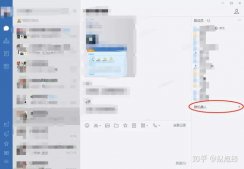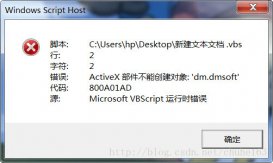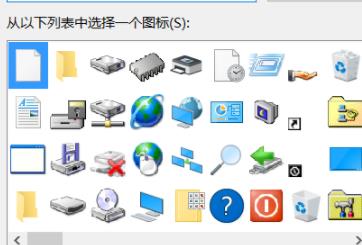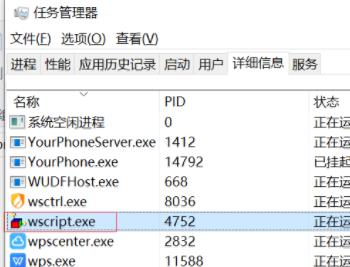对于文件的操作,例如:生成一个或者打开一个或者删除一个.txt格式文件。
虽然官方的FILE插件提供了一些基本功能,但功能不多。
你并不需要理解什么是fso模版,什么是vbs语句,直接套用下面的语句吧!
红色字为自己定义的部分,蓝色字为任意选一部分
如果你看不懂,请参考下面的例子!
操作同一个文件红色部分必须相同
请认真看括号内的解释内容
定义一个名为fso的关系文件问题的对象,对于一个文件的操作只需写一次,此句必须写
VBS Set fso = CreateObject("Scripting.FileSystemObject")
0.判断一个文件或文件夹是否存在(yn是返回值,文件存在返回1,不存在返回0)
VBS yn=fso.FileExists(判断文件的目录)
1.创建一个文件(蓝字定义该文本文件是否可以被下次写入覆盖,省略默认为ture)
VBS set ttfile=fso.createtextfile(创建的文件目录,ture|false)
2.打开一个已存在的文件(蓝字定义文件写入方式,分别为a.只读b.可读写,但每打开一次文件重写c.在文件末尾写)
VBS const forreading=1
VBS const forwriting=2
VBS const forappending=8
注意:要想更改打开方式必须关闭文件重新打开
VBS set ttfile=fso.opentextfile(打开文件的目录,forreading|forwriting|forappending)
3.关闭一个打开的文件(红色部分要于已经打开的文件红色部分相同)
VBS ttfile.close
4.读取打开文件的一行并回车(红色部分ttfile要于已经打开的文件红色部分相同)
VBS read=ttfile.ReadLine
5.读取所有文件内容(红色部分ttfile要于已经打开的文件红色部分相同)
VBS read=ttfile.ReadAll
6.写入一行并回车(红色部分要于已经打开的文件红色部分相同)
VBS ttfile.writeline(自己要写入的内容)
7.删除指定文件(若已定义过ttfile则不需要第一句)
VBS set ttfile=fso.GetFile(要删的文件目录)
VBS ttfile.delete
8.判断输入标记是否在末尾(是返回-1,否则返回0)
VBS yn=ttfile.atendofstream
以下是一些文件夹的操作
8.判断是否为根目录(yn是返回值,文件存在返回1,不存在返回0)
VBS yn=fso.IsRootFolder
9.读取文件夹
VBS set ttfile=fso.GetFolder(文件夹目录)
10.创建一个文件夹
VBS set ttfile=fso.creaFolder(创建的文件夹目录)
11.删除指定文件夹(若已定义过ttfile则不需要第一句)
VBS set ttfile=fso.GetFolder(要删的文件目录)
VBS ttfile.deletefolder
下面是其他一些经常用到的文件操作(注意:可用于所有格式的文件。红字是你的上文脚本已经定义过的)
VBS ttfile.size 返回文件大小
VBS ttfile.type 返回文件类型
VBS ttfile.DateCreated 返回文件创建时间
VBS ttfile.DatelastAccessed 返回文件最近访问时间
VBS ttfile.DateLastModified 返回文件最后修改时间
VBS ttfile.name 返回文件名称
VBS ttfile.ShortPath 返回文件短路径名
VBS ttfile.path 返回文件物理地址
|
1
2
3
4
5
6
7
8
9
10
11
12
13
14
15
16
17
18
19
|
VBS Set fso = CreateObject("Scripting.FileSystemObject") //判断d盘下是否有文件1.txt VBS pd1=fso.FileExists(d:\1.txt) if 0=pd1 //没有的话,在d盘下创建一个不可覆盖的文件1.txt VBS set txtfile=fso.createtextfile("d:\1.txt",false) //以在末尾写入的方式打开1.txt VBS set txtfile=fso.opentextfile("d:\1.txt",forappending) //写入一行“1234567890” VBS txtfile.writeline("1234567890") //关闭1.txt VBS txtfile.close endif //以只读方式打开1.txt VBS set txtfile=fso.opentextfile("d:\1.txt",forreading) //读取第一行,并将其赋予变量read VBS read=txtfile.ReadLine //关闭1.txt VBS txtfile.close |
一时间没有完全列出所有函数,不足的部分希望大家跟帖补上。
'creat by 席飞剑(小席老师)
'操作文本文件,操作fso对象(文件对象操作)
创建文件
|
1
2
3
4
5
6
7
8
9
|
dim fso, fset fso = server.CreateObject("Scripting.FileSystemObject")set f = fso.CreateTextFile("C:\test.txt", true) '第二个参数表示目标文件存在时是否覆盖f.Write("写入内容")f.WriteLine("写入内容并换行")f.WriteBlankLines(3) '写入三个空白行(相当于在文本编辑器中按三次回车)f.Close()set f = nothingset fso = nothing |
打开并读文件
|
1
2
3
4
5
6
7
8
9
10
11
12
13
14
15
16
17
|
dim fso, fset fso = server.CreateObject("Scripting.FileSystemObject")set f = fso.OpenTextFile("C:\test.txt", 1, false) '第二个参数 1 表示只读打开,第三个参数表示目标文件不存在时是否创建f.Skip(3) '将当前位置向后移三个字符f.SkipLine() '将当前位置移动到下一行的第一个字符,注意:无参数response.Write f.Read(3) '从当前位置向后读取三个字符,并将当前位置向后移三个字符response.Write f.ReadLine() '从当前位置向后读取直到遇到换行符(不读取换行符),并将当前位置移动到下一行的第一个字符,注意:无参数response.Write f.ReadAll() '从当前位置向后读取,直到文件结束,并将当前位置移动到文件的最后if f.atEndOfLine thenresponse.Write("一行的结尾!")end ifif f.atEndOfStream thenresponse.Write("文件的结尾!")end iff.Close()set f = nothingset fso = nothing |
打开并写文件
|
1
2
3
4
5
6
7
8
9
|
dim fso, fset fso = server.CreateObject("Scripting.FileSystemObject")set f = fso.OpenTextFile("C:\test.txt", 2, false) '第二个参数 2 表示重写,如果是 8 表示追加f.Write("写入内容")f.WriteLine("写入内容并换行")f.WriteBlankLines(3) '写入三个空白行(相当于在文本编辑器中按三次回车)f.Close()set f = nothingset fso = nothing |
判断文件是否存在
|
1
2
3
4
5
6
7
8
|
dim fsoset fso = server.CreateObject("Scripting.FileSystemObject")if fso.FileExists("C:\test.txt") thenresponse.Write("目标文件存在")elseresponse.Write("目标文件不存在")end ifset fso = nothing |
移动文件
|
1
2
3
4
|
dim fsoset fso = server.CreateObject("Scripting.FileSystemObject")call fso.MoveFile("C:\test.txt", "D:\test111.txt") '两个参数的文件名部分可以不同set fso = nothing |
复制文件
|
1
2
3
4
|
dim fsoset fso = server.CreateObject("Scripting.FileSystemObject")call fso.CopyFile("C:\test.txt", "D:\test111.txt") '两个参数的文件名部分可以不同set fso = nothing |
删除文件
|
1
2
3
4
|
dim fsoset fso = server.CreateObject("Scripting.FileSystemObject")fso.DeleteFile("C:\test.txt")set fso = nothing |
创建文件夹
|
1
2
3
4
|
dim fsoset fso = server.CreateObject("Scripting.FileSystemObject")fso.CreateFolder("C:\test") '目标文件夹的父文件夹必须存在set fso = nothing |
判断文件夹是否存在
|
1
2
3
4
5
6
7
8
|
dim fsoset fso = server.CreateObject("Scripting.FileSystemObject")if fso.FolderExists("C:\Windows") thenresponse.Write("目标文件夹存在")elseresponse.Write("目标文件夹不存在")end ifset fso = nothing |
删除文件夹
|
1
2
3
4
|
dim fsoset fso = server.CreateObject("Scripting.FileSystemObject")fso.DeleteFolder("C:\test") '文件夹不必为空set fso = nothing |
到这里就差不多了,希望大家多写多练






